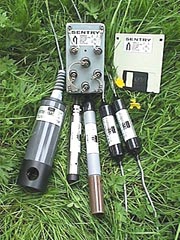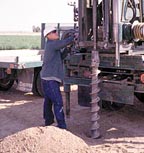
Let's assume that the data collected is representative and good. Most monitoring data is collected and put into quarterly, semi-annual or annual reports and submitted, usually to a governmental agency (local, state or federal) for review. The better reports track trends in contaminant concentrations indicative of ground water movement from contaminant source areas on site. In some cases, the monitoring data is providing an indication of progress being made by a ground water recovery and treatment system operating on site.
Unfortunately, too much data is being collected at a large expense without being analyzed for trends, which may indicate the need to modify monitoring or ground water flow at the site. Monitoring wells can demonstrate if off-site migration is occurring or deeper aquifers are being affected. Since ground water and associated contamination generally move very slowly - often feet per day or less - action can be taken in advance to minimize unforeseen impacts if the monitoring data is carefully reviewed.

On the other hand, in many cases, a large number of monitoring wells were initially installed on the more complex sites with a wide range of parameters being analyzed. In some cases, many compounds being analyzed were never even used on site. However, the initial list of wells and frequency of monitoring rarely changes and too much data is collected for too long.
A thorough analysis of the data will indicate which wells can be eliminated or suggest changes in the frequency of monitoring to save money without compromising the monitoring program.
Let's not collect data for the sake of collecting data to fill filing cabinets and hard drives. The data trends should be watched closely and changes made where necessary.



Report Abusive Comment